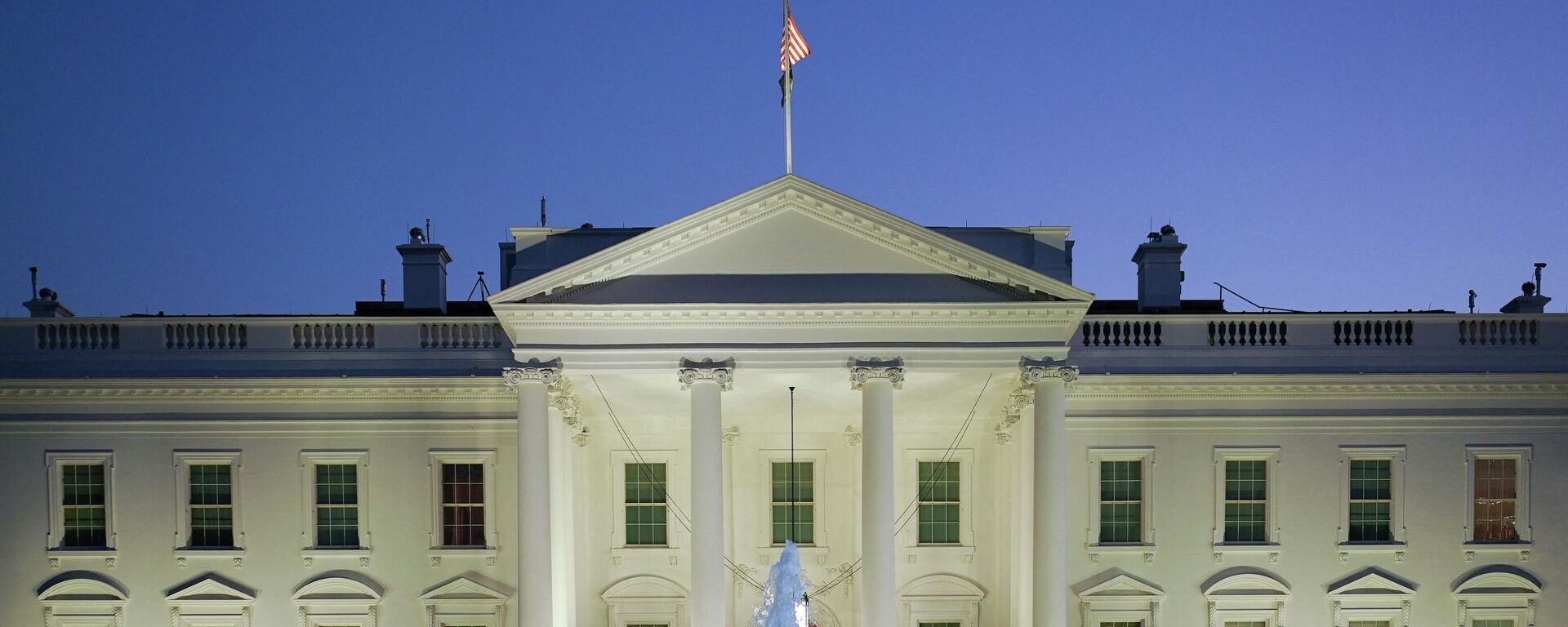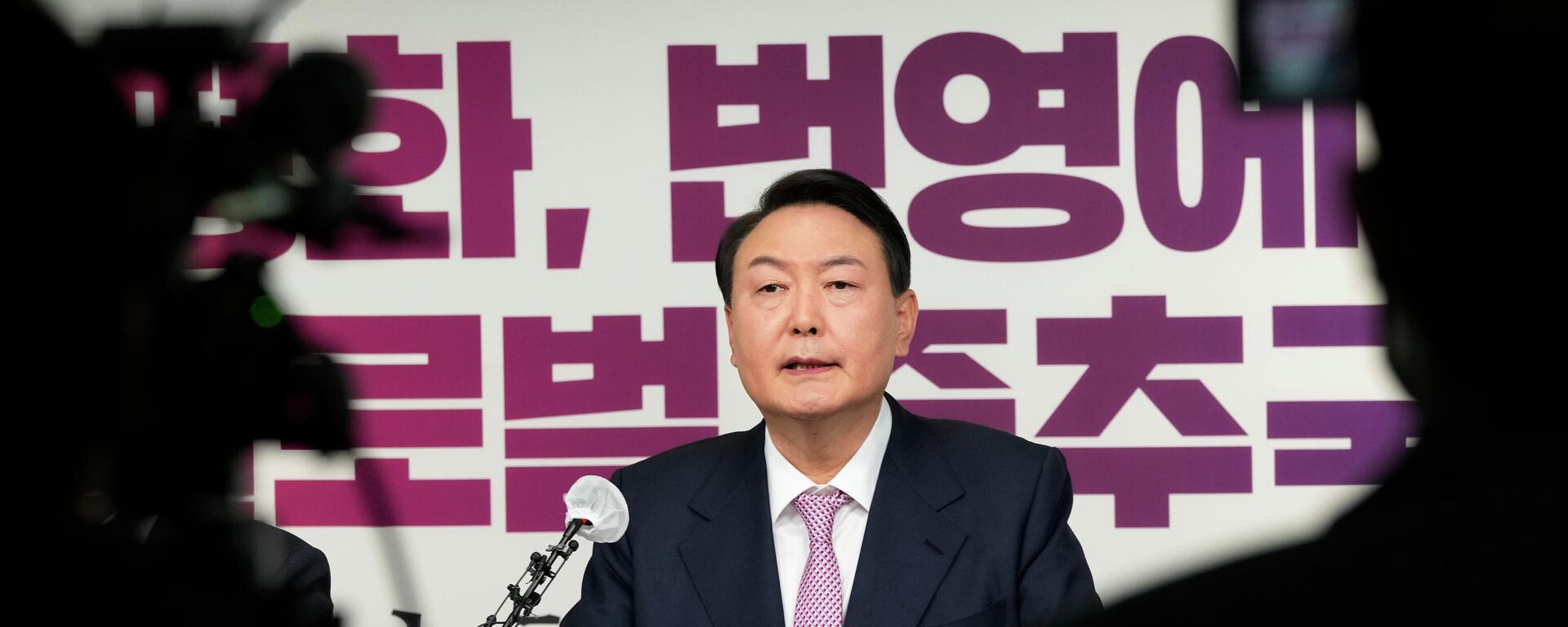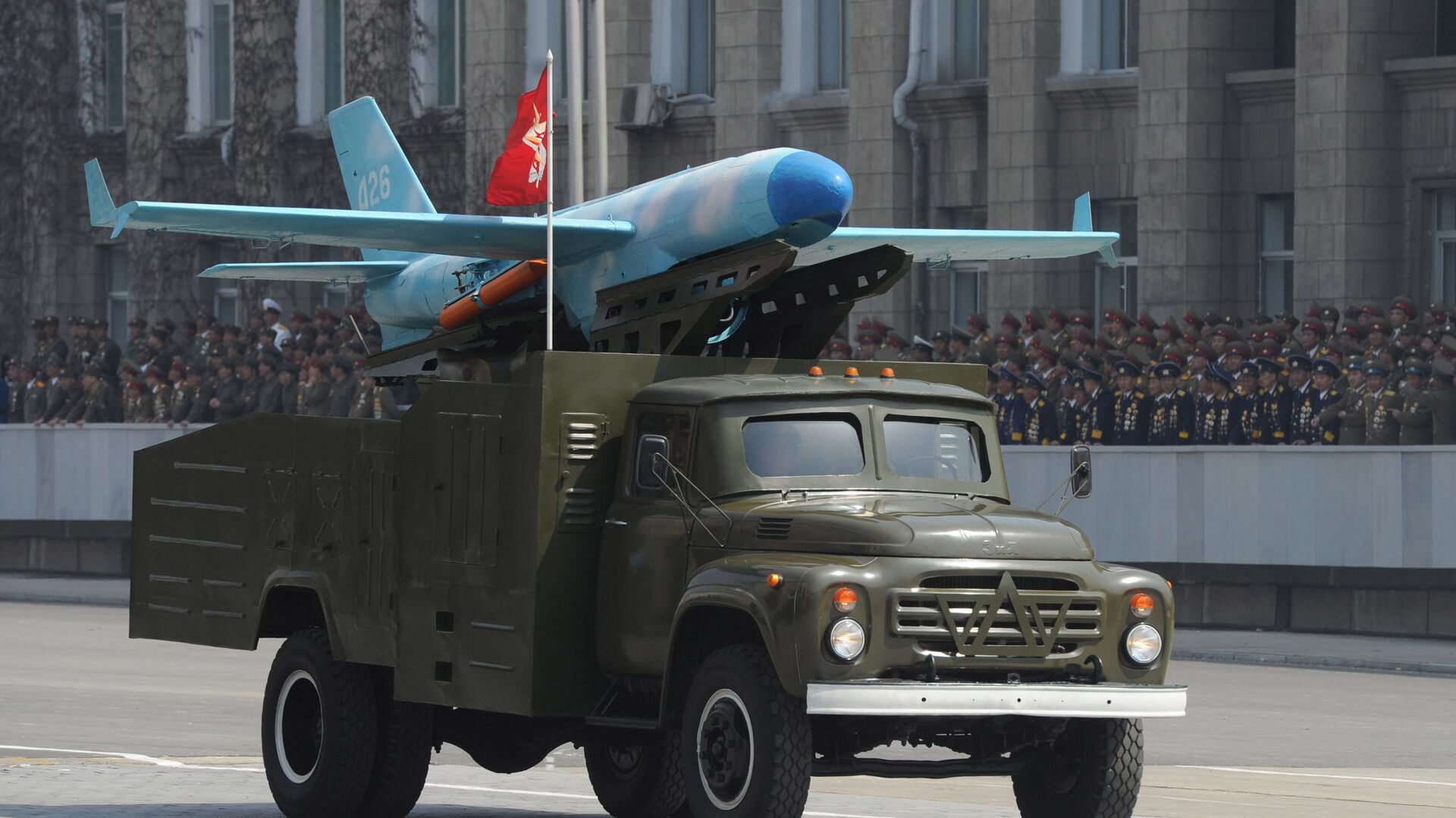https://sputnikglobe.com/20230105/north-korean-drone-flew-directly-into-no-fly-zone-around-south-koreas-presidential-palace-1106067474.html
North Korean Drone Flew Directly Into No-Fly Zone Around South Korea's Presidential Palace
North Korean Drone Flew Directly Into No-Fly Zone Around South Korea's Presidential Palace
Sputnik International
North Korea launched five drones into South Korean airspace on December 26, sparking a military alert and outrage from Seoul.
2023-01-05T17:06+0000
2023-01-05T17:06+0000
2023-09-18T13:36+0000
military
south korea
drone
presidential palace
seoul
provocation
north korea
https://cdn1.img.sputnikglobe.com/img/103332/07/1033320716_0:157:3087:1893_1920x0_80_0_0_e3603900af856c2dfe46eeb6659dc269.jpg
One of the five stealthy North Korean drones launched into South Korea in late December penetrated the 3.7 km no-fly zone around the country’s presidential office in central Seoul, a South Korean military official has conceded.The admission, which comes after more than a week of denials from authorities that the violation of the no-fly zone had occurred, and statements by the country’s Joint Chiefs that media reports to that effect were “untrue and groundless,” comes amid heightened concerns in the South regarding the capabilities of its neighbors’ unmanned aerial vehicles (UAVs).The South Korean military clarified that the errant drone had not flown over the presidential palace itself, and that the safety of the building, situated in a secure area known as P-73, was not in jeopardy at any point.The South Korean military previously stated that it could not immediately detect and successfully intercept the small North Korean surveillance drones launched into the country in late December due to their ability to radically alter their speed and trajectory in flight, and because of their small size – with radar cross section of the craft too tiny to be picked up by traditional radar systems.After illegally entering the country’s airspace on December 26, the North Korean drones ended up loitering over the country for up to five hours, with fighters and helicopters scrambled to try to take them down, firing up to 100 shots, but reportedly failing to hit the intruders. A South Korean KA-1 attack aircraft crashed after taking off from the Wonju Base to intercept the drones, with its two pilots hospitalized.The South Korean military believes the drones were sent to snap pictures of its military facilities, with one making its way to Seoul and the rest traveling further along the country’s western coast.President Yoon has called on the military to develop an “overwhelming response capability to North Korean provocations going beyond proportional levels,” and instructed the armed forces to create a new multipurpose drone warfare unit, as well as “drone-killer” systems.The Yoon administration announced a $261.3 billion five year defense budget in late December, with spending to include over $441 million in outlays for drone defenses – including both offensive and defensive UAV technology, plus anti-drone systems such as electromagnetic and laser weapons.South Korea retaliated to the December drone incursion – North Korea’s first since 2017, by flying its own UAVs North.Relations between North Korea on one side and South Korea and the United States on the other have deteriorated sharply over the past two years, with the friendly personal rapport established between North Korean leader Kim Jong-un, South Korean President Moon Jae-in and US President Donald Trump replaced by a return to the long-reigning status quo of high tensions under the latter two men’s successors. In December, the Yoon government officially returned the “enemy” label on North Korea, which had been lifted by Moon in 2019. In his year-end address last week, Kim Jong-un announced that Pyongyang would boost its nuclear missile production “exponentially” in the coming year amid growing tensions. 2022 saw a record number of North Korean missile launches and artillery drills, as well as large-scale military exercises, including drills using nuclear-capable bombers, by South Korea and the US.
https://sputnikglobe.com/20230103/us-s-korea-plan-to-coordinate-on-potential-responses-to-n-koreas-tests-according-to-white-house-1106020488.html
https://sputnikglobe.com/20230103/biden-says-not-discussing-joint-nuclear-exercises-with-south-korea-1106001949.html
https://sputnikglobe.com/20230102/south-korean-president-says-people-fed-up-with-for-show-only-summits-between-north-and-south-1105988095.html
south korea
seoul
north korea
Sputnik International
feedback@sputniknews.com
+74956456601
MIA „Rossiya Segodnya“
2023
News
en_EN
Sputnik International
feedback@sputniknews.com
+74956456601
MIA „Rossiya Segodnya“
Sputnik International
feedback@sputniknews.com
+74956456601
MIA „Rossiya Segodnya“
north korea, south korea, drone, uav, unmanned aerial vehicle, presidential palace, incident
north korea, south korea, drone, uav, unmanned aerial vehicle, presidential palace, incident
North Korean Drone Flew Directly Into No-Fly Zone Around South Korea's Presidential Palace
17:06 GMT 05.01.2023 (Updated: 13:36 GMT 18.09.2023) North Korea launched five drones into South Korean airspace on December 26, sparking a military alert and outrage from Seoul. South Korean President Yoon Suk-yeol has instructed the National Security Office to suspend the landmark 2018 military agreement with Pyongyang if it “stages another provocation intruding on our territory.”
One of the five stealthy North Korean drones launched into South Korea in late December penetrated the 3.7 km no-fly zone around the country’s presidential office in central Seoul, a South Korean military official has conceded.
“It briefly flew into the northern edge of the zone, but it did not come close to key security facilities,” the anonymous official
said.
The admission, which comes after more than a week of denials from authorities that the violation of the no-fly zone had occurred, and statements by the country’s Joint Chiefs that media reports to that effect were “untrue and groundless,” comes amid heightened concerns in the South regarding the capabilities of its neighbors’ unmanned aerial vehicles (UAVs).

3 January 2023, 22:41 GMT
The South Korean military clarified that the errant drone had not flown over the presidential palace itself, and that the safety of the building, situated in a secure area known as P-73, was not in jeopardy at any point.
The South Korean military previously stated that it could not immediately detect and successfully intercept the small North Korean surveillance drones launched into the country in late December due to their ability to radically alter their speed and trajectory in flight, and because of their small size – with radar cross section of the craft too tiny to be picked up by traditional radar systems.
After illegally entering the country’s airspace on December 26, the North Korean drones ended up loitering over the country for up to five hours, with fighters and helicopters scrambled to try to take them down, firing up to 100 shots, but reportedly failing to hit the intruders. A South Korean KA-1 attack aircraft crashed after taking off from the Wonju Base to intercept the drones, with its two pilots hospitalized.

3 January 2023, 06:12 GMT
The South Korean military believes the drones were sent to snap pictures of its military facilities, with one making its way to Seoul and the rest traveling further along the country’s western coast.
President Yoon has called on the military to develop an “overwhelming response capability to North Korean provocations going beyond proportional levels,” and instructed the armed forces to create a new multipurpose drone warfare unit, as well as “drone-killer” systems.
The Yoon administration
announced a $261.3 billion five year defense budget in late December, with spending to include over $441 million in outlays for drone defenses – including both offensive and defensive UAV technology, plus anti-drone systems such as electromagnetic and laser weapons.
South Korea retaliated to the December drone incursion – North Korea’s first since 2017, by flying its own UAVs North.
Relations between North Korea on one side and South Korea and the United States on the other have deteriorated sharply over the past two years, with the
friendly personal rapport established between North Korean leader Kim Jong-un, South Korean President Moon Jae-in and US President Donald Trump replaced by a return to the long-reigning status quo of high tensions under the latter two men’s successors. In December, the Yoon government officially returned the “enemy” label on North Korea, which had been lifted by Moon in 2019. In his year-end address last week, Kim Jong-un announced that Pyongyang would boost its nuclear missile production “exponentially” in the coming year amid growing tensions. 2022 saw a record number of North Korean missile launches and artillery drills, as well as large-scale military exercises, including drills using nuclear-capable bombers, by South Korea and the US.

2 January 2023, 08:53 GMT





